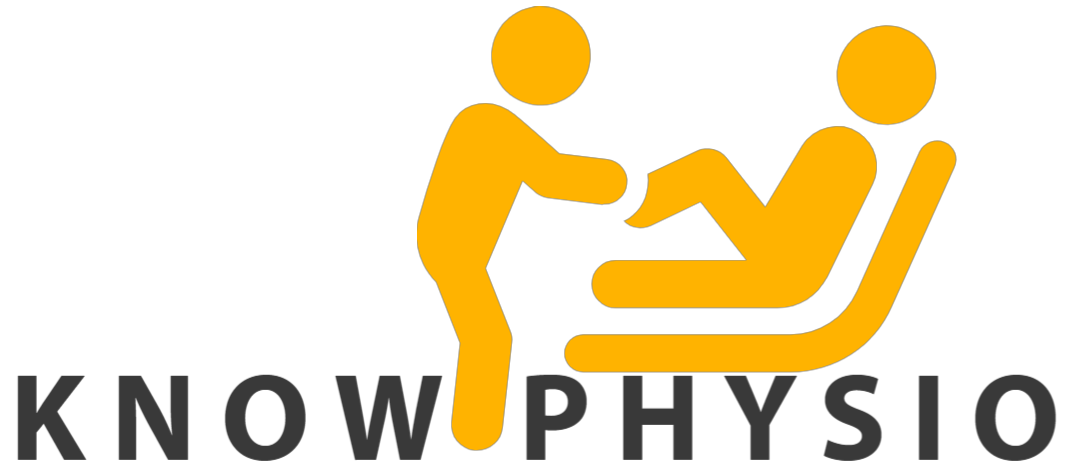Introduction
Cerebral palsy (CP) is a group of lifelong disorders that affect movement and muscle tone. It is caused by damage to or abnormalities in the brain, most often occurring before or during birth. The condition can vary greatly in its severity and symptoms, and it affects each individual differently. In this blog post, we will delve into the details of cerebral palsy, including its types, symptoms, causes, prevention, treatment, and physiotherapy management.
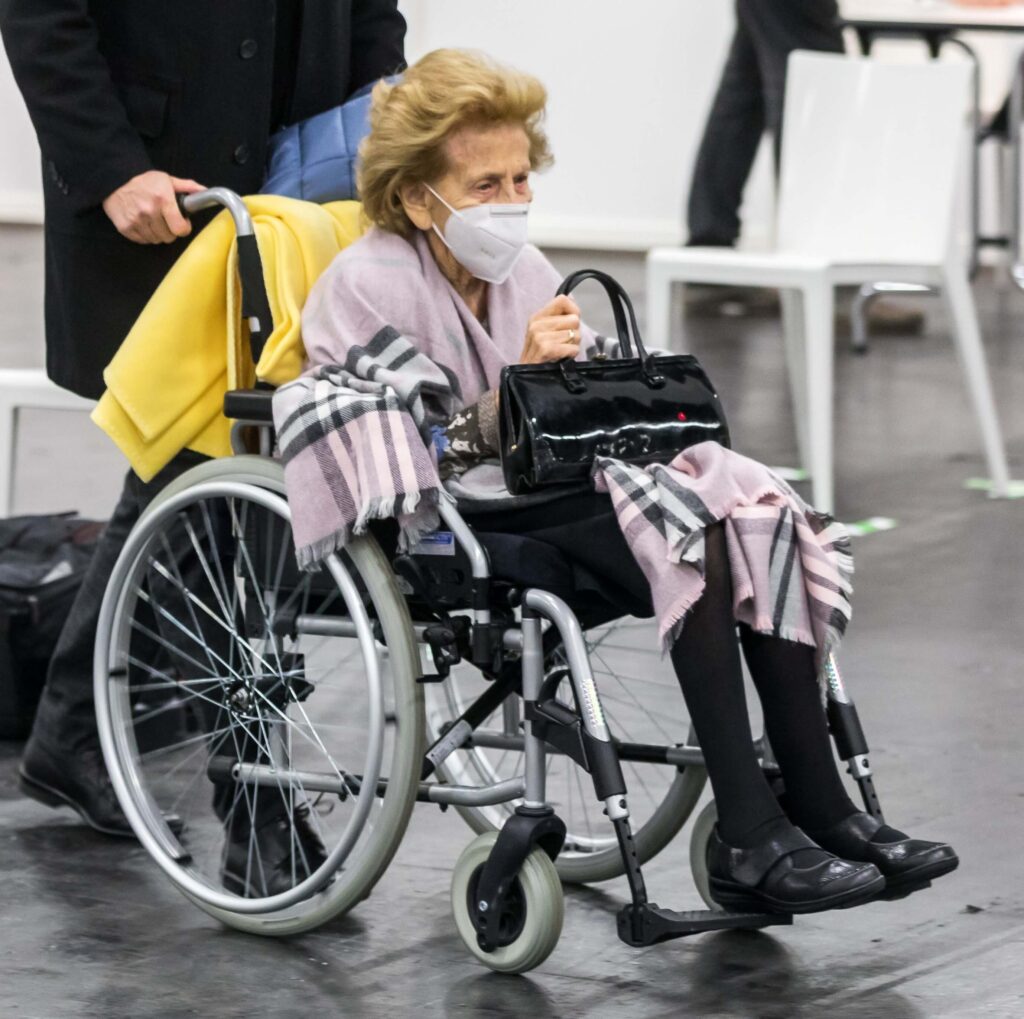
Cerebral palsy is not a disease and it does not worsen over time, but the symptoms may change. There are different types of CP, based on the symptoms and the area of the brain affected. The most common type is spastic CP, which affects about 80% of individuals with CP.
CP can also affect other parts of the body. For example, some people with CP may have difficulty speaking, hearing, or seeing. They may also experience intellectual disabilities, seizures, or problems with their bladder and bowel control. Many people with CP also have other medical conditions that need to be managed.
Cerebral palsy can be diagnosed at birth or in early childhood, and the treatment is based on the specific needs of each individual
What is Cerebral Palsy ?
Cerebral palsy (CP) is a group of lifelong disorders that affect movement and muscle tone. It is caused by damage to or abnormalities in the brain, most often occurring before or during birth. The condition can vary greatly in its severity and symptoms, and it affects each individual differently.
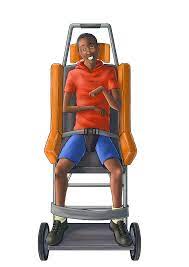
There are four main types of cerebral palsy: spastic, athetoid, ataxic and mixed, each with its own set of symptoms and characteristics which we will see in next few topics. Common symptoms include difficulty with movement and coordination, stiffness or tightness in the muscles, involuntary movements, difficulty with fine motor tasks, difficulty with speech and communication, abnormal reflexes, and difficulty with balance and posture, we will discuss these symptoms in detail.
There is no cure for cerebral palsy, but various management and treatment options can help improve symptoms and quality of life , and we will see these managements in next topics.
Symptoms
The symptoms of cerebral palsy can vary greatly depending on the type and severity of the condition. Some common symptoms include:
- Difficulty with movement and coordination: Children with cerebral palsy may have trouble with fine motor tasks such as buttoning clothes or writing, and they may also have trouble with gross motor tasks such as walking or climbing stairs. They may also have trouble with balance and coordination, making it difficult to maintain a steady posture.
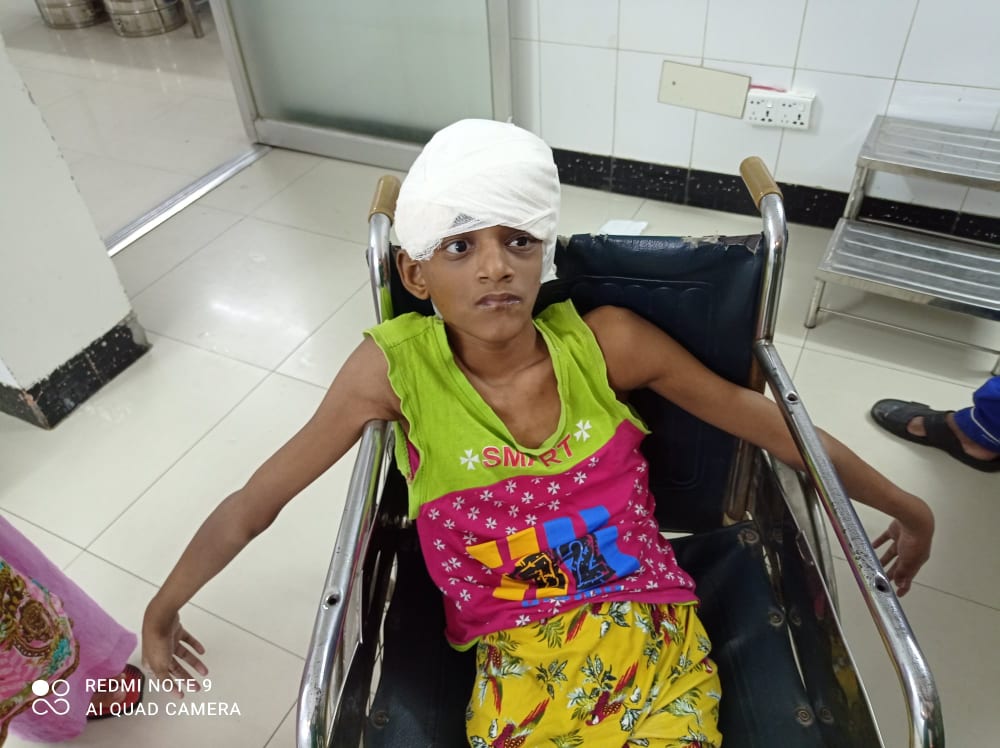
- Stiffness or tightness in the muscles (spasticity): This is the most common type of cerebral palsy and is characterized by stiffness and tightness in the muscles, making movement difficult. This can lead to difficulty with range of motion, and the affected limb may appear contracted or frozen in one position.
- Involuntary movements or writhing (athetosis): This type of cerebral palsy is characterized by involuntary, writhing movements of the hands, feet, and face. The muscle tone is often fluctuating, making it difficult to maintain a steady posture.
- Difficulty with fine motor tasks: Children with cerebral palsy may have trouble with tasks such as buttoning clothes, writing, or holding a utensil.
- Difficulty with speech and communication: Children with cerebral palsy may have trouble with speech, swallowing, and communication, due to muscle weakness or control. This may require speech therapy to improve these skills.
- Abnormal reflexes: Children with cerebral palsy may have abnormal reflexes, such as exaggerated or decreased reflexes, which can affect movement and coordination.
- Difficulty with balance and posture: Children with cerebral palsy may have difficulty with balance and posture, making it difficult to walk or maintain a steady position.
It’s important to note that not all individuals with cerebral palsy will have all these symptoms and it also can vary in severity. Early diagnosis and treatment can make a big difference in managing the symptoms and improving the quality of life for individuals with cerebral palsy.
Causes
The causes of cerebral palsy are varied and can include:
- Brain damage before, during, or after birth: The most common cause of cerebral palsy is brain damage that occurs before, during, or after birth. This can be caused by a variety of factors such as lack of oxygen to the brain, infection, or trauma during childbirth.

- Genetic mutations or chromosomal abnormalities: Some cases of cerebral palsy are caused by genetic mutations or chromosomal abnormalities that affect brain development.
- Infections during pregnancy: Infections such as rubella, cytomegalovirus, or toxoplasmosis can cause brain damage and lead to cerebral palsy if contracted during pregnancy.
- Lack of oxygen to the brain during childbirth: Prolonged labor, difficult delivery, or complications during childbirth can lead to a lack of oxygen to the brain and result in cerebral palsy.
- Trauma to the brain during childbirth: Trauma to the brain during childbirth, such as a skull fracture or bleeding in the brain, can also lead to cerebral palsy.
It’s important to note that many cases of cerebral palsy have no known cause and research is ongoing to understand the underlying factors that contribute to the condition. It’s also worth to mention that cerebral palsy is not a contagious or infectious disease, it’s a result of neurological damage that happen before, during or after birth.
It’s important to know that early identification and interventions can help improve the quality of life for individuals with cerebral palsy. Parents and caregivers should be aware of the risk factors and causes of cerebral palsy and take steps to reduce their risk, such as seeking early and regular prenatal care, avoiding infections during pregnancy and ensuring proper nutrition and care during pregnancy.
Types
The disorder is caused by damage to the developing brain, typically occurring before or during birth. There are several types of CP, each with its own unique set of symptoms and challenges.
- Spastic CP: This is the most common type of CP, accounting for about 80% of all cases. It is characterized by stiff, tight muscles that make movement difficult. People with spastic CP may have trouble walking, and their limbs may be difficult to move.

- Athetoid CP: This type of CP is characterized by involuntary movements, such as writhing or wriggling of the hands, feet, and face. People with athetoid CP may also have trouble controlling their movements, making it difficult for them to complete simple tasks.
- Ataxic CP: Movement and coordination is disturbed. People with ataxic CP may have trouble walking, and they may have a tendency to fall. They may also have difficulty with fine motor tasks, such as writing or buttoning a shirt.

- Mixed CP: This type of CP is a combination of the symptoms of the other three types. A person with mixed CP may have symptoms of spasticity, athetosis, and ataxia.
- Hemiplegic CP: This type of CP affects one side of the body, causing weakness and stiffness on one side of the body. This can cause difficulties with balance and coordination, and with fine motor tasks such as writing or buttoning a shirt.
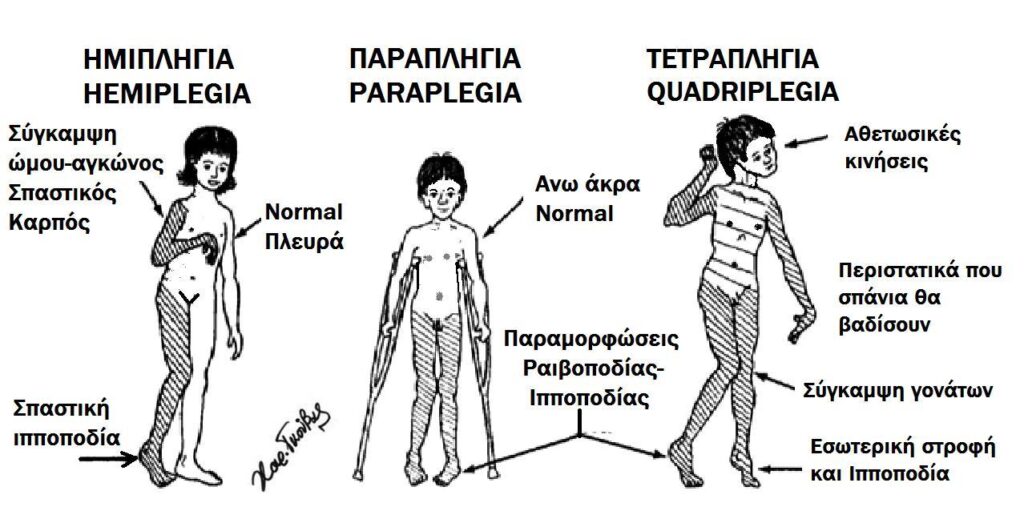
- Diplegic CP: This type of CP primarily affects the legs, causing stiffness and difficulty with walking. To a lesser degree , arms may be affected.
- Quadriplegic CP: This type of CP affects all four limbs, and can also cause problems with trunk control, leading to difficulty with sitting, standing or walking.
CP is a lifelong condition and the type of CP can affect the severity of the symptoms, the way in which they are managed and the type of treatment required. Treatment options for CP may include physical therapy, occupational therapy, speech therapy, and medication. Surgery may also be used to help improve muscle tone and mobility.
It’s important to keep in mind that each individual with CP is unique, and their symptoms and needs may vary. With proper care, people with CP can lead fulfilling and independent lives.
about Cerebral palsy on wikipedia here !
Diagnosis
The diagnosis of CP can be challenging, as there are no specific tests or imaging studies that can confirm it. Instead, doctors rely on a combination of clinical examination, medical history, and imaging studies to make a diagnosis.

The first step in diagnosing CP is a thorough examination by a pediatrician or neurologist. During the examination, the doctor will assess the child’s muscle tone, reflexes, and ability to move and coordinate their limbs. They will also observe the child’s posture, balance, and gait (the way they walk).
In addition to the physical examination, the doctor will also take a detailed medical history from the child’s parents. This includes information about the pregnancy, delivery, and any complications that may have occurred. The doctor may also ask about any developmental delays or problems the child has had since birth.
Imaging studies such as an MRI or CT scan may also be used to help diagnose CP. These studies can show brain abnormalities that may be associated with the disorder. However, it’s important to note that not all children with CP will have visible brain abnormalities on imaging studies.
It’s important to note that CP can be difficult to diagnose, especially in infants and young children. It’s also possible for a child to be diagnosed with CP later in life, if the signs and symptoms become more noticeable as the child develops.
Overall, the diagnosis of CP involves a combination of clinical examination, medical history and imaging studies. A multidisciplinary team approach is often used which includes a pediatrician, neurologist, physiatrist, occupational therapist, speech-language pathologist and physical therapist.
Treatment
Treatment for cerebral palsy (CP) is aimed at improving the child’s functional abilities and managing their symptoms. The approach to treatment is usually multidisciplinary, which means that a team of healthcare professionals work together to provide the best care for the child. The team typically includes a pediatrician, neurologist, physiatrist, occupational therapist, speech-language pathologist, and physical therapist.
Physical therapy is the main form of treatment for CP. The goal of physical therapy is to improve the child’s strength, flexibility, and coordination. Physical therapists will work with the child to help them learn how to move their body in the most efficient way possible. They may use exercises, stretches, and specialized equipment to help the child improve their motor skills.

Occupational therapy is another important component of treatment for CP. The goal of occupational therapy is to help the child learn how to perform everyday activities, such as dressing, eating, and writing. Occupational therapists will work with the child to develop fine motor skills and improve their hand-eye coordination. They may also provide adaptive equipment, such as special utensils or writing tools, to help the child complete tasks more easily.
Speech-language therapy is also an important part of treatment for children with CP. Children with CP may have difficulty speaking or communicating effectively. Speech-language therapists will work with the child to improve their speech and language skills, and may also teach the child alternative communication methods, such as sign language or a communication device.
Medications can also be used to manage the symptoms of CP. For example, muscle relaxants can be prescribed to help reduce spasticity (stiffness) in the muscles. Pain medication can also be used to help manage pain caused by the disorder.
Surgery may also be an option for some children with CP. For example, surgery can be used to release tight muscles or to straighten out crooked bones. Surgery is typically only recommended for children with severe symptoms that cannot be managed with other forms of treatment.
In addition to these specific treatments, children with CP may also need special education and social services. Special education can help the child learn and achieve their full potential. Social services can help the child and their family with practical needs, such as transportation or equipment.
It’s important to note that treatment for CP is a lifelong process. The child’s needs will change as they grow and develop, and the treatment plan will need to be adjusted accordingly. It’s also essential for parents and caregivers to be involved in the child’s treatment, as they play a crucial role in helping the child achieve their goals.
Overall, treatment for cerebral palsy is a multifaceted approach and involve multiple healthcare professionals. The main focus of treatment is to improve the child’s functional abilities, as well as manage their symptoms and make their life as normal as possible. With the right support and care, children with CP can lead fulfilling lives.
Prevention
Preventing cerebral palsy (CP) can be challenging, as the causes of the disorder are not fully understood. However, there are steps that can be taken to reduce the risk of a child developing CP.
One of the most important things that can be done to prevent CP is to ensure that pregnant women receive adequate prenatal care. This includes regular check-ups with a healthcare provider, as well as monitoring for any complications that may occur during pregnancy. For example, if a woman develops a condition such as pre-eclampsia, which is high blood pressure during pregnancy, it can be treated to minimize the risk of complications for the baby.
Another important step in preventing CP is to prevent premature births and low birth weight. Premature birth and low birth weight are risk factors for CP, and steps can be taken to reduce the likelihood of these complications. For example, pregnant women who smoke or use drugs should stop as these can lead to premature birth and low birth weight.

During delivery, steps can be taken to prevent CP. For example, if a baby is in distress, a c-section may be performed to minimize the risk of brain damage. Also, avoiding certain interventions such as vacuum extraction and forceps during delivery can prevent traumatic injuries to the baby’s head.
After birth, early detection and treatment of any health issues that may affect a child’s development is crucial. For example, if a child is found to have a seizure disorder, it can be treated to prevent brain damage.
It’s important to note that while these steps can help reduce the risk of a child developing CP, they cannot guarantee that a child will not develop the disorder. However, with the right care and support, children with CP can lead fulfilling lives.
In summary, preventing cerebral palsy involves ensuring that pregnant women receive adequate prenatal care, preventing premature birth and low birth weight, taking steps to prevent injury during delivery and early detection and treatment of any health issues that may affect a child’s development. However, it’s important to note that CP can still occur despite preventive measures.
Physical therapy in Cerebral palsy
Physiotherapy is one of the main forms of treatment for cerebral palsy (CP) and can be an effective way to improve the child’s functional abilities and manage their symptoms. The goal of physiotherapy is to help the child learn how to move their body in the most efficient way possible. There are several different physiotherapy techniques that may be used to help children with CP, including:

- Bobath therapy: Also known as neurodevelopmental therapy, Bobath therapy is a holistic approach that focuses on the child’s overall development. The therapist will work with the child to improve their posture, balance, and coordination. They may also use exercises and stretches to help improve the child’s muscle tone and flexibility.
- Constraint-induced movement therapy (CIMT): CIMT is a technique that involves restricting the use of the child’s less affected limb, in order to encourage the use of the more affected limb. This technique has been found to be particularly effective in improving the use of the upper limbs in children with hemiplegic CP.
- Aquatic therapy: Aquatic therapy can be beneficial for children with CP as the buoyancy of the water helps to support their body weight and reduces the impact of gravity on their joints. This allows the child to move more freely and can also help to improve their muscle tone and strength.
- Botulinum toxin injections: Botulinum toxin injections can be used to reduce spasticity (stiffness) in the muscles. The injections are usually given directly into the affected muscle and can help to improve the child’s range of motion and make it easier for them to perform everyday activities.
- Serial casting: Serial casting is a technique that involves placing a child’s limb in a cast, which is then gradually stretched over a period of time. This can help to improve the child’s range of motion and reduce muscle contractures (permanently shortened muscle).
It’s important to note that treatment for CP is a lifelong process and the child’s needs will change as they grow and develop. The treatment plan will need to be adjusted accordingly. Also, the best treatment approach is the one that is tailored to the child’s specific needs, and it’s essential for parents and caregivers to be involved in the child’s treatment, as they play a crucial role in helping the child achieve their goals.
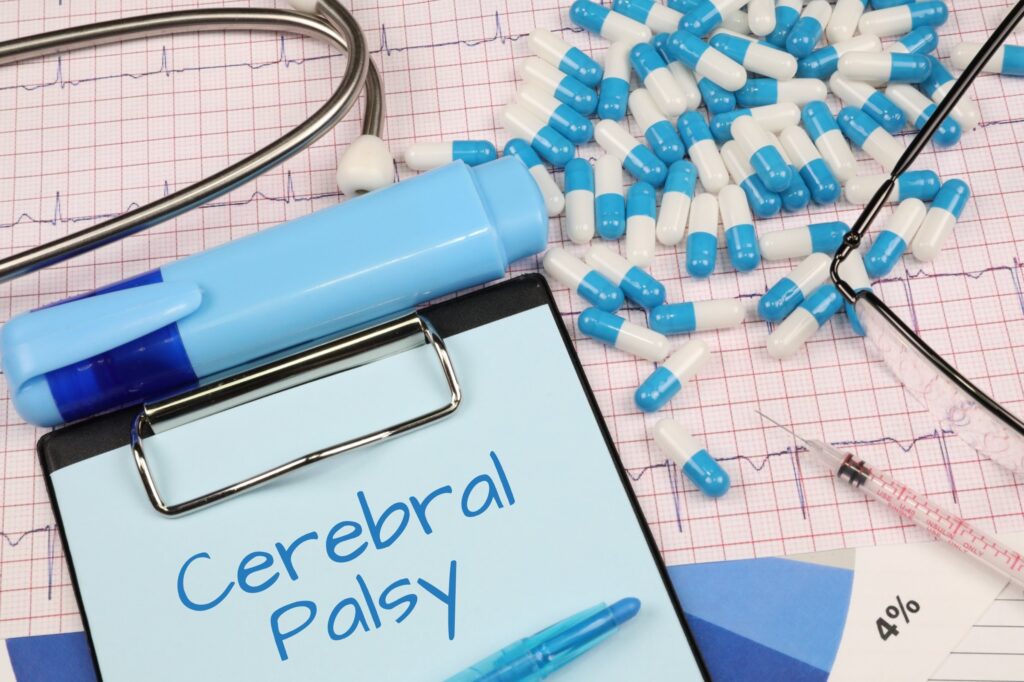
In summary, physiotherapy is one of the main forms of treatment for cerebral palsy and can be an effective way to improve the child’s functional abilities and manage their symptoms. Different physiotherapy techniques such as Bobath therapy, Constraint-induced movement therapy, Aquatic therapy, Botulinum toxin injections, and Serial casting are used to help children with CP. It’s essential to tailor the treatment to the child’s specific needs and involve parents and caregivers in the process.
